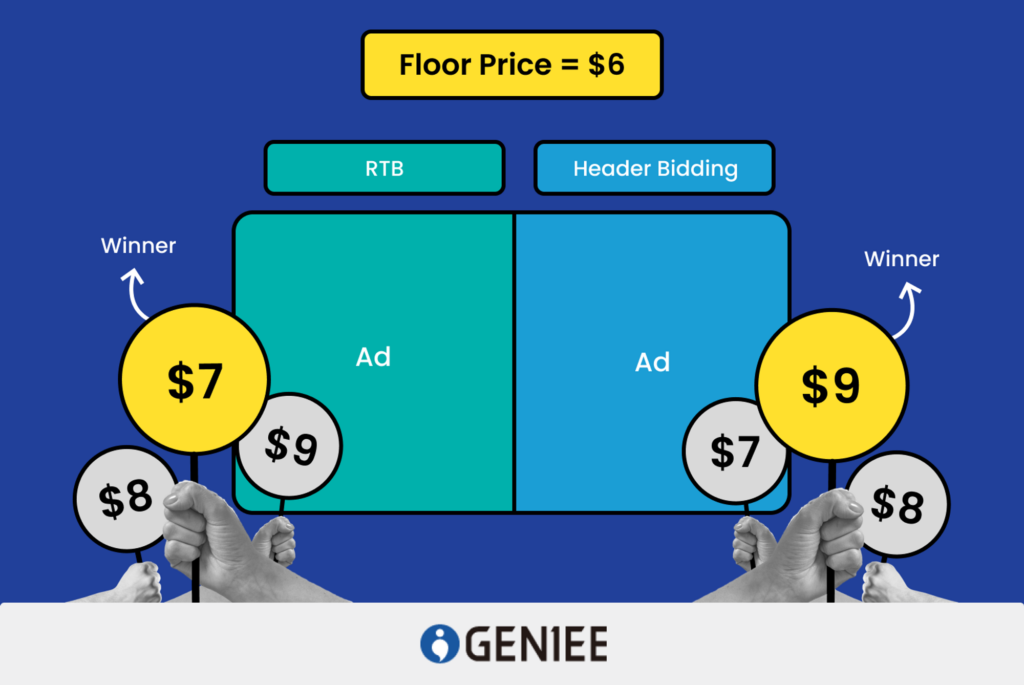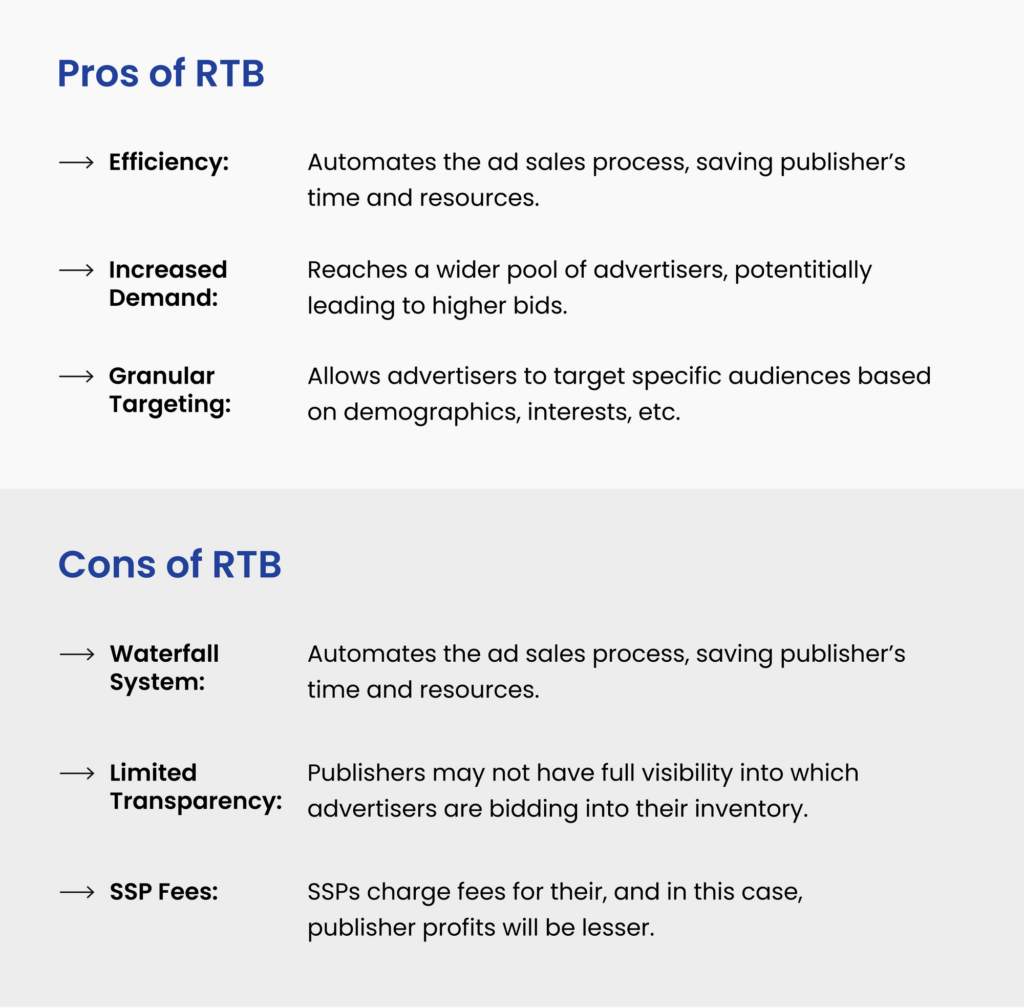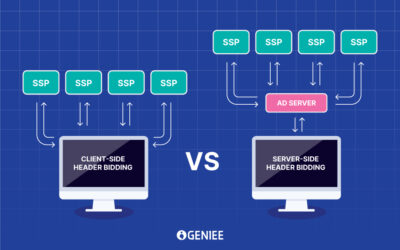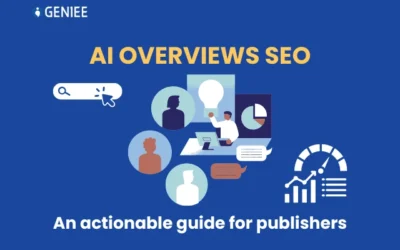
| In this blog, we breakdown Header Bidding vs RTB for publishers to optimize the ad slots and maximize ad revenue. This blog will show how both models work, including the positive and negative impact to your website. |
The world of online advertising is complex, with various acronyms and technologies that keep expanding and evolving. Understanding these mechanisms is very important for publishers to maximize revenue from their ad inventory.
Two key concepts in this realm are Real-Time Bidding (RTB) and Header Bidding. While both involve automated auctions for ad placements, they differ significantly in their approach. In this blog we will explain each method of both RTB and Header Bidding, helping you grasp their functionalities and choose the best option for your needs.
Let’s begin with the RTB (Real Time Bidding) first.
Real-Time Bidding (RTB): The Foundation of Programmatic Advertising
When thinking about RTB, think about an auction house specifically made for ad placements on websites and apps. That’s essentially the core of RTB. It’s an automated, programmatic system where advertisers compete in real-time for ad impressions on publisher websites.
Here’s a breakdown of the RTB process:
- Ad Request: When a user visits a publisher’s website, an ad request is sent out. This ad request contains information about the user such as general demographics, users’ interest based on their browsing history, etc., the content being viewed, and the available ad space.
- Supply-Side Platform (SSP): This acts as the publisher’s representative, connecting them to Ad Exchanges (think of them as the auction houses). The SSP sends the ad request to multiple Ad Exchanges simultaneously.
- Ad Exchange: Each Ad Exchange houses Demand-Side Platforms (DSPs) – platforms used by advertisers to manage their ad campaigns. The Ad Exchange broadcasts the ad request to all connected DSPs.
- Bidding: DSPs analyze the impression information and decide whether to bid. If the requirements and also the targeting matched with the request of the advertisers, they will start to bid to the Ad Exchange. This bidding process happens in milliseconds.
- Auction & Ad Serving: The Ad Exchange determines the highest bidder and sends that information back to the SSP. The winning advertiser’s ad is then served on the publisher’s website.
That said, now let’s have a look at the pros and cons of real-time bidding used in traditional waterfall method.
Pros and Cons of RTB

Header Bidding: Unlocking Programmatic Advertising Potential
By taking the latest technology approach, Header Bidding simultaneously sends the ad request to multiple SSPs and Ad Exchanges within a unified auction. This process increases competition, which drives up the price of ad space, as advertisers fight for the valuable opportunity to be visible on your website. Header bidding also offers greater transparency, allowing you to see which advertisers are interested and the bids they’re placing.
Header bidding allows publishers to take more control over the auction process:
- Header Tag Integration: A special code snippet (header tag) is placed in the website’s header. Header tag simultaneously sends the ad request to multiple SSPs and Ad Exchanges.
- Unified Auction: Unlike the waterfall method of RTB, all SSPs and Ad Exchanges can bid on the impression concurrently in a single auction.
- Increased Competition: This unified auction creates a more competitive environment, potentially driving up bid prices for publishers.
- Greater Transparency: Publishers can see which advertisers are bidding and the corresponding bids, allowing for informed decision-making.
More to discover
Header Bidding: A Guide

Pros and Cons of Header Bidding

Header Bidding vs RTB based on publisher’s capabilities
The optimal choice between RTB and Header Bidding depends on your specific needs and resources. Below is the quick guide for a better understanding based on the capabilities:
- For Publishers with Limited Resources: Starting with RTB will be more easy to implement and provide publishers with access to a wider pool of advertisers.
- For Publishers with High-Value Inventory: Consider Header Bidding. The potential for increased revenue might outweigh the complex nature of header bidding implementation.
- For Publishers with Technical Expertise: Header Bidding offers more control and transparency but requires technical knowledge for proper setup. So, if you have the knowledge or resources to set it up, it’d be better to go with header bidding.
Conclusion
Many publishers choose a hybrid approach, leveraging both RTB and Header Bidding. This allows them to benefit from the wider reach of RTB while maximizing revenue from many partners. Publishers who would like to implement need to check the capabilities of the team and inventories to find the best combination or the best bidding method to be implemented.
While both RTB and Header Bidding have their advantages, the trend leans towards increased publisher control. As technology evolves, header bidding solutions are likely to become easier to implement, making them a more attractive option for a wider range of publishers. Ultimately, the best approach depends on your resources and goals. By understanding the strengths and weaknesses of both RTB and Header Bidding, you can make an informed decision to maximize your ad revenue and navigate the ever-changing world of online advertising.
Frequently Asked Questions
1. How much can I increase my revenue with header bidding?
Results may vary, but some publishers report CPM increases of over around 20% – 50%. The higher value of the inventories, can lead to higher potential CPM
2. Why is my website page load getting slower after implementing Header Bidding?
Results may vary, but some publishers report CPM increases of over around 20% – 50%. The higher value of the inventories, can lead to higher potential CPM.
3. What are some good header bidding solutions?
If not implemented correctly, multiple calls during the auction can increase page load times.
4. When should I choose RTB and Header Bidding?
This depends on your website traffic, ad inventory value, and resources. For the smaller publisher with limited resources, RTB can be a good starting point due to its ease of implementation. However, if the publisher has high-value ad inventory and is looking to maximize revenue, header bidding might be the best option.




0 Comments